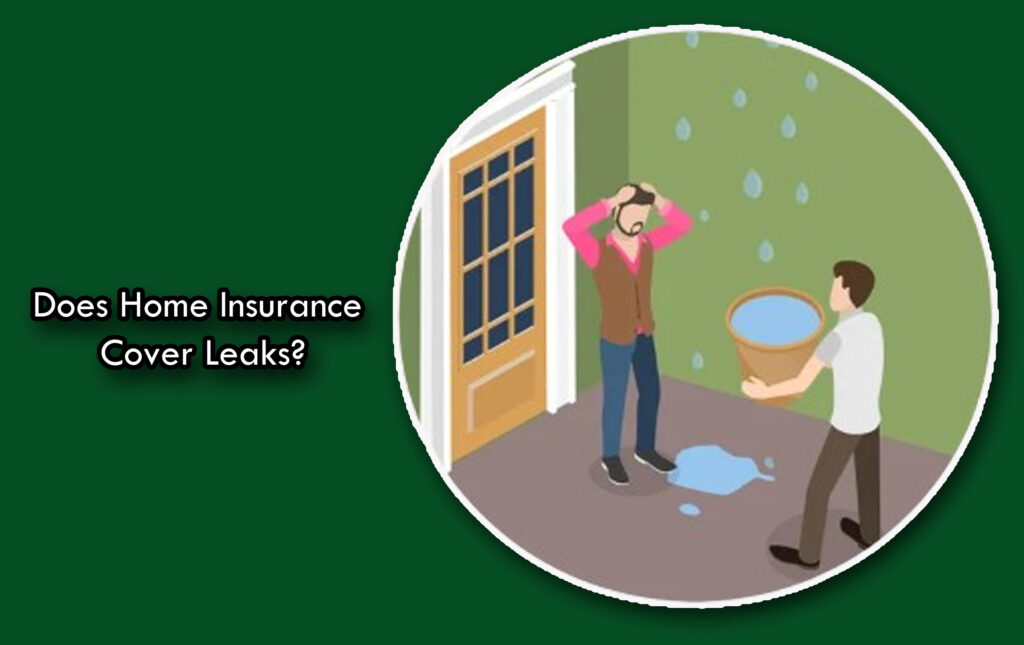Does home insurance cover leaks? Discovering a leak in your home can be stressful, leaving you wondering whether your home insurance will help cover the damage.

Water damage is one of the most frequent issues for homeowners, but the specifics of what insurance covers can be confusing.
However, understanding when and how your home insurance policy might cover leaks is essential for peace of mind and protecting your property.
So, while some types of water damage are usually covered, others may not be, depending on the cause of the leak and the details of your policy.
Therefore, knowing what your insurance includes can help you prepare for unexpected repairs and avoid costly surprises.
Hence, in this blog post, we will be exploring the types of water leaks your insurance might cover and might not cover.
Does Home Insurance Cover Roof Leaks?
Home insurance may cover roof leaks, but it depends on your policy and the cause of the leak. If the leak is sudden, like one caused by a storm or fallen tree, insurance may help pay for repairs.
However, if the leak is due to poor maintenance or age, it’s likely not covered. Reviewing your policy can help you know exactly what is included and what isn’t.
What Else Does Home Insurance Cover?
Besides roof leaks, home insurance can cover various types of damage and unexpected events, such as:
- Theft and break-ins
- Vandalism or damage from riots
- Falling objects
- Accidents involving cars or aircraft
- Fire or smoke damage
- Storms, like hail or wind
- Sudden power surges that damage electronics
Usually, your home’s structure, belongings, and sometimes your yard are included in these protections. Some plans may also cover items like air conditioning units or offer compensation for roof replacements.
What Isn’t Covered By Home Insurance?
Not all types of damage are included in standard policies. Common exclusions are:
- Damage from pests like termites or rats
- Rust, wear, or gradual decay
- Earthquakes and floods
- Damage due to war
- Foundation cracks
- Neglect or lack of upkeep
- Vandalism if the home is vacant for an extended period
However, if mold forms as a result of an issue that your policy does cover, like a sudden pipe burst, insurance may step in.
How Do Insurance Companies Handle Roof Damage?
After reporting roof damage, your insurance company will send an adjuster to assess it and estimate repair costs.
If your claim is approved, you’ll receive funds to cover repairs after paying your deductible. Sometimes, only repairs are needed instead of replacing the entire roof. A contractor can help decide the best solution after your claim is processed.
Should You File A Claim for A Roof Leak?
First, check your policy to confirm coverage for roof leaks. If it’s covered, document the damage with photos or videos and call a professional for an inspection. This approach helps prevent further damage and supports your insurance claim.
How To File A Claim For A Roof Leak
To file a claim, follow these steps:
- Document the damage thoroughly.
- Contact your insurance provider.
- Submit your claim.
- Wait for an adjuster to review the damage.
- If approved, receive the payout and start repairs.
If your claim is denied, ask your insurance company for a detailed reason to understand why.
Why Doesn’t Insurance Cover All Roof Leaks?
Insurance won’t usually cover roof leaks due to aging or poor maintenance. Keeping your roof in good shape is the homeowner’s job. Some policies offer optional add-ons for older roofs, but these come at an extra cost.
Final Thoughts
Home insurance often covers unexpected or sudden damage, but not wear and tear from poor maintenance. Knowing what your policy includes helps you plan and avoid surprises when repairs are needed.



